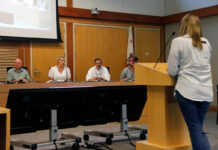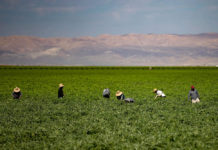Pests, whether ants in the kitchen or weeds in the garden, are a frustrating reality in any home or garden. While many of us think of a pesticide as the quick solution, it is not the safest alternative for our family’s heath and for the environment. Our watershed, creeks, rivers and local water bodies can be contaminated with pesticides and other chemicals that we commonly use. These chemicals are not only a threat to aquatic life, but can also affect the quality of our drinking water and our health. So, how can we control pests safely? What are alternatives to pesticides? Should pesticides ever be used?
The Russian River Watershed Association would like to remind you that there are safe alternatives to manage pest invasions without using chemical pesticides. There are many methods to choose from for your pest control strategy. For many pests, total elimination is almost impossible, but it is possible to control and manage pests to an acceptable level. This article explores non-chemical methods of controlling garden pests which are as effective and convenient as their chemical alternatives, and are also the safest alternative for our health and environment.
First let’s look at the problem: All pesticides are toxic at some level, but each varies in toxicity to humans and animals. Pesticides include many chemicals, both natural and synthetic, and they are intended to control, destroy or repel pests. Common pesticides include insecticides, herbicides, rodenticides, fungicides, disinfectants and sanitizers. Pesticides reach our creeks and rivers through storm drains when rainfall or excess irrigation washes them off the landscape, onto the sidewalk or street, into the gutter, and ultimately to our natural waterways.
Environmentally responsible tools for pest management are found with the approach known as Integrated Pest Management (IPM). IPM helps control and manage pest problems while minimizing the risk to people and the environment. IPM follows these implementation steps: Identify the pest correctly – this will help determine the management method; Evaluate which preventative and non-chemical methods can be used to reduce the problem. This includes prevention, cultural controls, physical and biological controls; Carry out the control methods. A few examples of non-chemical controls are: Removing infested plants or plant parts; Finding and destroying pest habitats; Keeping mulch on all soil surfaces to reduce weeds and maintain soil health; Planting a diversity of species to attract beneficial insects.
Sustainable pest control starts before the pests appear. This means applying the best landscape design, construction, and management practices to help foster a healthy environment in which plants can resist disease, insect infestation, and can “out-compete” weeds. This includes properly selecting the right plant material that is pest free, selecting local and native plants, not over-planting, not over-watering, and keeping mulch on the surface of the soil to suppress weeds. Once a garden is planted, regularly monitor for plant health and signs of pests. Recognizing the difference between pests and beneficial insects is important because a healthy landscape has a balance of “good guys” and “bad guys,” and pesticides usually kill both.
With IPM, even natural pesticides are used only as a last resort. If you must use a pesticide, look for the least toxic option. Always implement the following safe practices to reduce pesticide effects on our local waterways: Clearly identify the pest problem and choose the least toxic pesticide that targets your pest Only purchase the amount of pesticide you need. Use spot treatments whenever possible and protect yourself as indicated on the container. Dispose of unused chemicals properly according to label instructions. Always avoid overwatering, especially after applying pesticides and fertilizers. Never let pesticide runoff flow into the storm drain. Do not apply pesticides outdoors when rain is forecasted or when it is windy, and never apply pesticides on paved areas or near waterways.
Visit the Russian River Watershed Association’s web site at www.rrwatershed.org to download a free copy of the Russian River Friendly Landscape Guidelines. This commentary was authored by Teresa Gudino of the City of Santa Rosa on behalf of RRWA.








